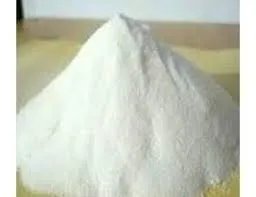
Жел . 25, 2024 15:46 Back to list
what is hydroxypropyl methyl cellulose
What is Hydroxypropyl Methyl Cellulose?
Hydroxypropyl methyl cellulose (HPMC) is a versatile synthetic polymer derived from cellulose, which is a natural polymer found in the cell walls of plants. It is widely used in various industries due to its unique properties, including its ability to form gels, create films, and stabilize emulsions. This article will explore the structure, properties, applications, and safety considerations of HPMC.
Structure and Properties
Hydroxypropyl methyl cellulose is a modified cellulose ether, produced by the chemical modification of cellulose through the substitution of hydroxyl groups with hydroxypropyl and methyl groups. The degree of substitution, which refers to the number of hydroxyl groups replaced, influences the properties of HPMC, such as solubility and viscosity.
HPMC is typically available as a white, odorless powder that is soluble in cold water but not in hot water. When mixed with water, it forms a clear and viscous solution, which has excellent thickening, binding, and film-forming properties. The viscosity of the solution can be adjusted by changing the concentration of HPMC, making it suitable for various applications.
Applications
The applications of HPMC are vast and diverse, spanning several industries
1. Pharmaceuticals HPMC is commonly used as a binding agent, excipient, and controlled-release agent in pharmaceutical formulations. It is particularly valued for its ability to sustain the release of active ingredients in tablets and capsules, allowing for better therapeutic efficacy and patient compliance.
2. Food Industry In the food industry, HPMC functions as a thickening agent, stabilizer, and emulsifier. It is used in a variety of products, including sauces, dressings, and bakery items, to improve texture and extend shelf life. Its role as a fat replacer also makes it popular in low-fat and reduced-calorie food formulations.
what is hydroxypropyl methyl cellulose

3. Construction HPMC is used in construction materials, such as cementitious products and adhesives, due to its water-retention properties and ability to enhance workability. By improving the consistency and reducing the risk of cracking in plaster, tile adhesives, and mortars, HPMC plays a crucial role in building and construction applications.
4. Cosmetics and Personal Care In cosmetic formulations, HPMC acts as a thickener and stabilizer in creams, lotions, and gels. Its ability to form a film makes it suitable for products designed to provide long-lasting adhesion and moisture retention.
5. Paints and Coatings HPMC is also utilized in the manufacturing of paints and coatings, where it enhances the viscosity and stability of the formulation while improving the application properties.
Safety and Regulatory Status
Hydroxypropyl methyl cellulose is generally recognized as safe (GRAS) by regulatory bodies, including the U.S. Food and Drug Administration (FDA) and the European Food Safety Authority (EFSA). It has been extensively studied for safety, and its use in food, pharmaceuticals, and cosmetics has been approved.
Despite its safety, it is important to handle HPMC with care, as the inhalation of dust from the powder can cause respiratory irritation. Proper safety measures, such as wearing masks and gloves, should be employed in industrial settings to minimize exposure.
Conclusion
Hydroxypropyl methyl cellulose is a multifunctional polymer that serves a wide range of applications across various industries, including pharmaceuticals, food, construction, cosmetics, and paints. Its unique properties, such as gel formation, thickening, and film-forming abilities, make it an invaluable ingredient in many formulations. As industries continue to seek innovative solutions for product development, HPMC is likely to play an increasingly vital role.
In summary, hydroxypropyl methyl cellulose is a prime example of how chemical modifications of natural polymers can yield products with significant functional capabilities. Its widespread acceptance and utility speak to the importance of HPMC in enhancing product quality and performance in modern formulations.
-
Versatile Hpmc Uses in Different Industries
NewsJun.19,2025
-
Redispersible Powder's Role in Enhancing Durability of Construction Products
NewsJun.19,2025
-
Hydroxyethyl Cellulose Applications Driving Green Industrial Processes
NewsJun.19,2025
-
Exploring Different Redispersible Polymer Powder
NewsJun.19,2025
-
Choosing the Right Mortar Bonding Agent
NewsJun.19,2025
-
Applications and Significance of China Hpmc in Modern Industries
NewsJun.19,2025







